How to work with chronic pain on the level of physiology (part 2)
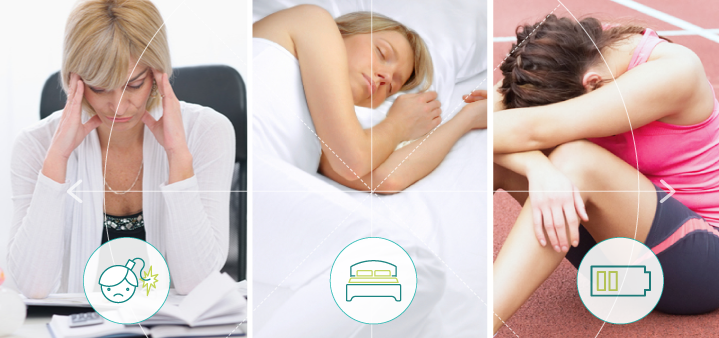
When you are in pain, the body gets stuck in a loop of emergency stress response and continues to cycle through endocrine response (release of adrenaline), sympathetic system activation (fight-flight-or-freeze), and immune response (increased inflammation). This can deplete the resources of the system, agitate it, or both. Attending to the three pillars of physiological health – stress, sleep, and energy – helps pull the body out of this vicious cycle and supports the healing process.
Here is a quick overview of the questions that you need to ask yourself or your client to get a better idea of what’s going on, and some basic strategies for working with each “pillar” using the Brhmana/Langhana model.
Stress
Questions to answer:
- What is your overall level of stress? (from day to day)
- What is the source (or multiple sources) of stress? (Is it work? Personal relationships? Self-imposed demands? Something else?)
- What are the manifestations of stress in the body? (Does stress show up as a tight neck? Headaches? Digestive distress? Anxiety?)
Strategies for managing stress:
1. Actively move the body. After encountering a stressor, the body is flushed with adrenaline; energy is being pulled away from the “maintenance” bodily functions and directed toward large skeletal muscles (so that you could fight or run away). If you do not have an opportunity to release the built-up energy through movement, it will be much harder for you to return to the state of balance. Repressed physical/emotional response to stressors significantly exaggerates the physiological response.
2. Use specific movements to relieve tension in the parts of the body where the stress shows up (to get out of the stress loop).
3. Use langhana breathing for stressful situations. When confronted with a stressful situation or an episode of pain, focus on lengthening the exhalation and introduce a slight hold at the end of the exhalation (called suspension). This will help your body switch into parasympathetic (rest-and-digest) mode.
4. Do other things that give you joy and make you feel balanced and calm. This varies from person to person and can range from walks on the beach to refrigerator cleaning.
Sleep
Questions to answer:
• Does the pain interrupt sleep?
• Does it hurt more before bed or in the morning?
• Can you get enough of quality sleep?
If you cannot sleep, the healing process and pain resilience is compromised. You need to find a way to get rest.
Strategies for better sleep
- Experiment with different sleep positions and props (like a neck pillow or whole body pillow) to create more support for the body.
- Encourage “sleep hygiene,” which means going to bed at a reasonable hour, staying away from agitating activities and exciting reading or TV watching before bed, keeping the temperature in the room comfortable, making the room dark, and so on. The goal is to set the stage to facilitate restful sleep.
- Try pre-sleep langhana practices. Start with some fast movements that involve large muscle groups and then gradually slow down the pace, deepen the breath, lengthen the exhalation, bring the body closer to the ground, spend more time in supported deep forward bends.
Energy
Questions to answer:
• Where on the affective diagram do you find yourself most often? (Identify the most persistent affect)
• What is the dominant quality of your energy? (Agitated, dragging, dull, hyper, etc.)
Strategies for managing energy
Identify where you need to move from your current location on the affective diagram to the place of more balance (Up? Down? Right?) Choose a brhmana practice to nourish the system and build it up or a langhana practice to purge unwanted stuff.
Important consideration: Recognize how the chronic pain has impacted your body budget up to this point. Are you so weakened by your suffering that you need to nourish and build first (gradually and gently)? Or do you need to purify the system first?
Other important considerations:
1. Brhmana doesn’t always mean “strong and active” practice. You can accomplish the brhmana effect with your breath alone. Langhana doesn’t always mean “calming”; it is more accurately described as “purging.”
2. Generally, it is more important to begin with langhana to purify the system and teach it how to eliminate, before you start building. To quote T.K.V. Desikachar: “The ability to lengthen the exhale should be achieved before introducing brhmana, as too much fire without elimination can create disturbing patterns of energy. To receive that which is new (fresh energy), we must first release what is old and no longer benefits us.”
3. Brhmana is not always heating, and langhana is not always cooling – heating/cooling is a different way of looking at energy.
4. When you work with energy, it is best to choose a brhmana or langhana breathing pattern and then build the rest of your practice around it. Here are some examples of brhmana and langhana breathing patterns and what you need to do to prepare for them in the course of the practice:
- Never force the breath; keep the flow smooth. If it becomes jerky, you are practicing beyond your capacity.
- DO NOT make your inhalation longer than your exhalation or your retention longer than your exhalation. It’s OK if IN+RET >EX
- DO NOT hold your breath for very long. It’s more important to lengthen your inhalation and/or exhalation.
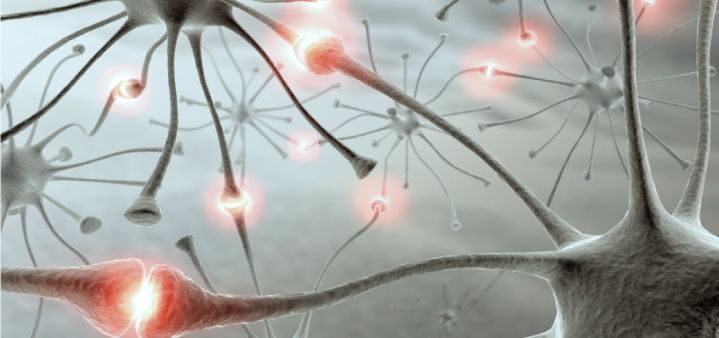
How to work with chronic pain on the level of the mind (Manomaya)
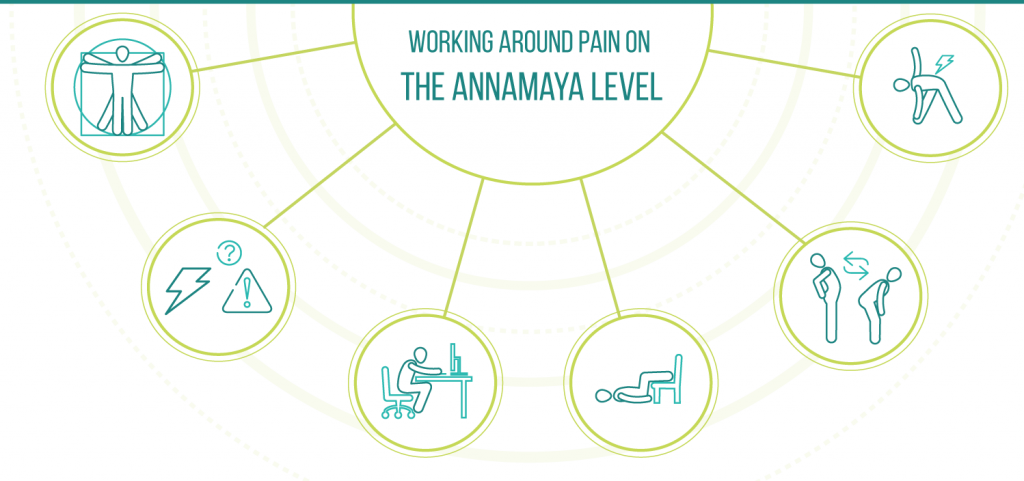
How to work with chronic pain on the level of the physical body (Annamaya)

How to work with chronic pain on the level of physiology (Pranamaya): Part 1

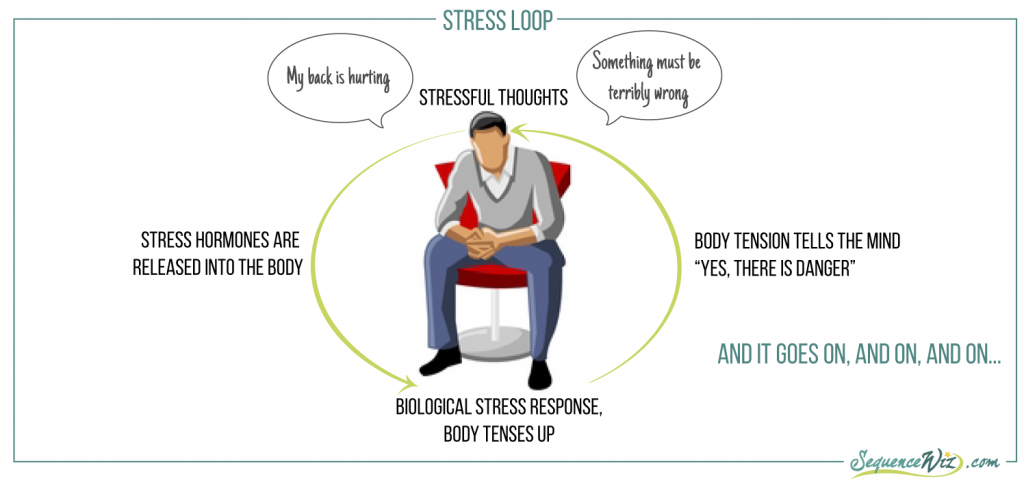
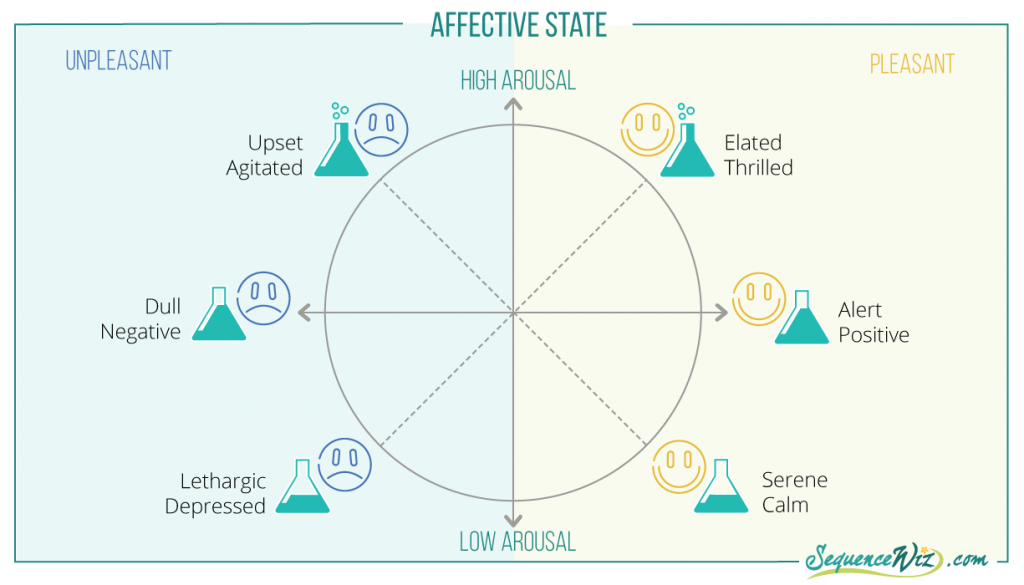

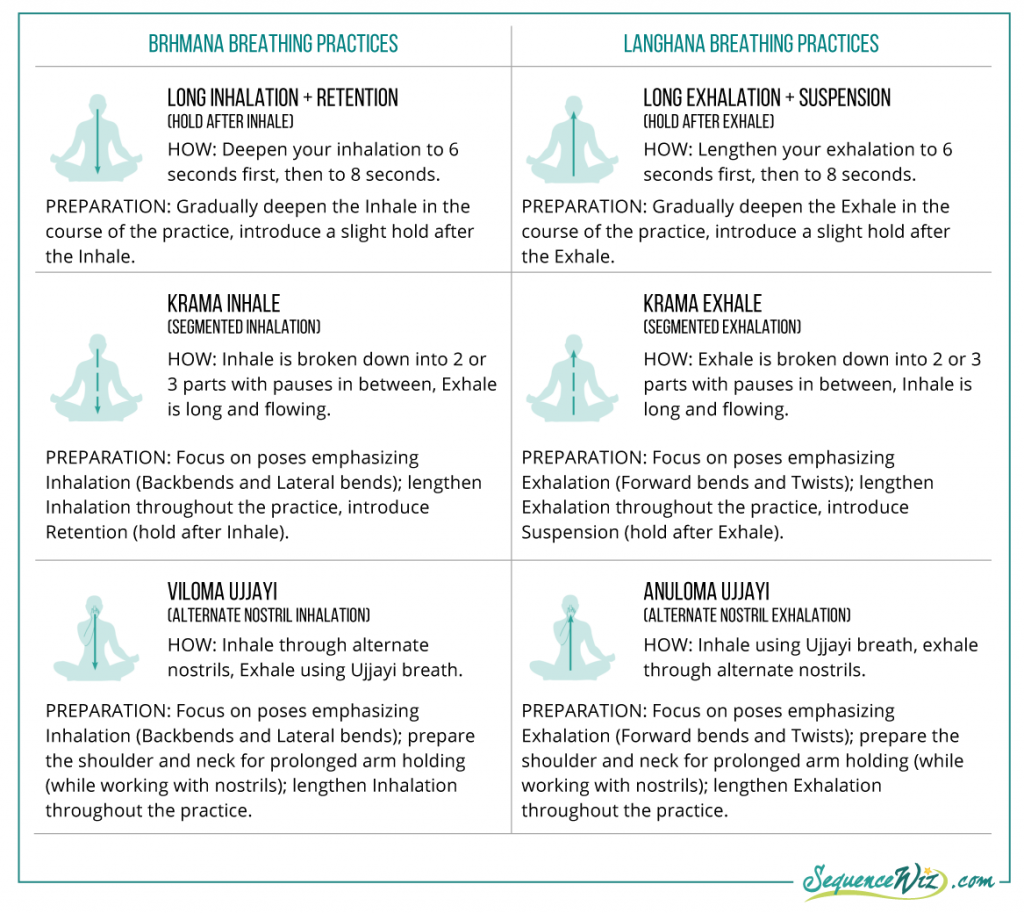
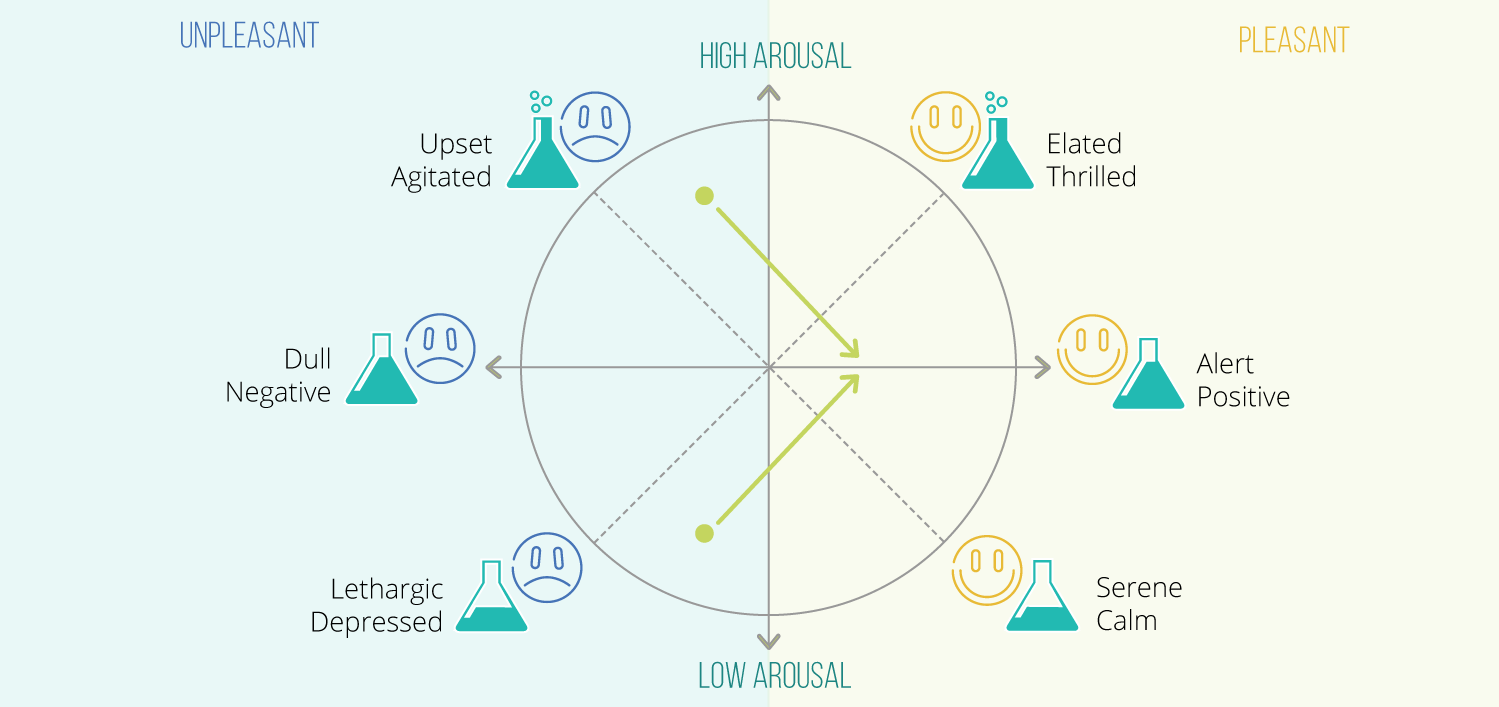







This energy diagram confuses me. I tend to spend a lot of time in agitated/lethargic states, which seem to be opposite sides of the negative spectrum. I would say this means that my agitation bonks my energy sending me into lethargy, only to boomerang back again, completely missing the intermediate states. I occasionally hit elated/thrilled, but rarely the other three states mentioned.
How does one “balance” a pinball?